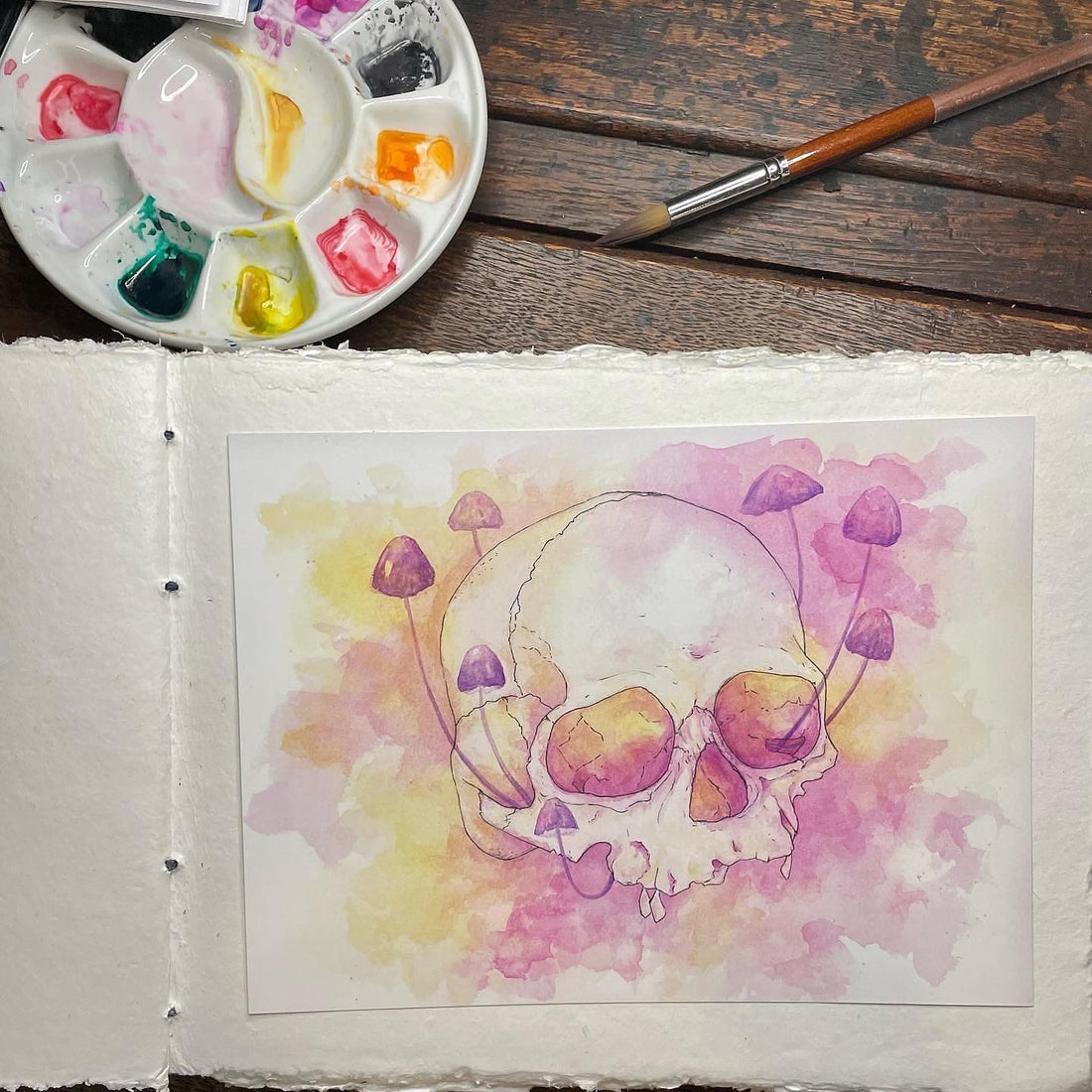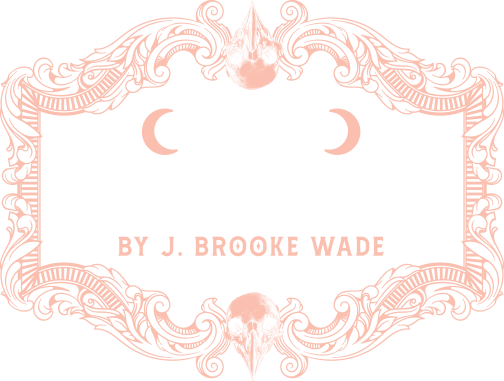
Exploring the World of Skull Art Across Cultures
Share
Exploring the Fascinating World of Skull Art Across Cultures
Skull art has captivated human imagination for centuries, transcending cultural boundaries and embodying a myriad of meanings. From ancient rituals to modern art, the depiction of skulls is a powerful symbol in human history. In this blog post, I'll journey through different styles of skull art across cultures, uncovering the rich tapestry of symbolism, tradition, and artistic expression that each style represents.
The Intriguing Symbolism of Skull Art
Skulls have long been a symbol of mortality, transformation, and reverence for the dead. While some might see the image of a skull purely as a reminder of death, various cultures imbue them with deeper meanings, ranging from protection and celebration to a connection with the spiritual realm. Skull art, in all its forms, offers a window into how societies view life, death, and the afterlife.
The Dia de los Muertos: Celebrating Life and Death
One of the most vibrant and well-known traditions involving skull art comes from Mexico's Dia de los Muertos, or Day of the Dead. Celebrated on November 1st and 2nd, this holiday honors deceased loved ones with elaborate altars, offerings, and vibrant festivities. Central to these celebrations are "calaveras" or sugar skulls.
Calaveras: These brightly decorated sugar skulls are not only a treat for the eyes but also a sweet remembrance of the departed. Skull painting in this context involves intricate, colorful designs adorned with flowers, patterns, and sometimes the names of the deceased. These skulls paintings serve as a joyful reminder that death is a natural part of life, and loved ones continue to live on in spirit.
Tibetan Skull Art: The Spiritual Journey
In Tibetan culture, skull art takes on a deeply spiritual significance. The use of skulls in Tibetan Buddhism, particularly in the form of Kapala (skull cups), is a profound expression of the impermanence of life and the cycle of death and rebirth.
Kapala: These skull cups are often elaborately carved and decorated, used in tantric rituals and meditation practices. The intricate designs symbolize the transformation of the mundane into the sacred, reminding practitioners of the ephemeral nature of existence. Skull art painting on Kapalas often features motifs of deities, mythical creatures, and sacred symbols, creating a powerful fusion of art and spirituality.
The Western Gothic Influence
In Western cultures, skull art has been synonymous with the Gothic and macabre. From the hauntingly beautiful works of European painters to modern tattoo art, skulls have been a central theme in exploring the darker aspects of human existence.
Vanitas Paintings: During the 16th and 17th centuries, Vanitas paintings became popular in Europe. These still-life paintings often featured skulls alongside other symbols of mortality, such as hourglasses and wilting flowers. The skull art in these paintings served as a stark reminder of the transient nature of life, urging viewers to reflect on their mortality and the futility of worldly pursuits.
Modern Skull Art: Today, skull art painting has evolved into a diverse and dynamic genre. Contemporary artists like Damien Hirst have redefined the use of skulls in art. Hirst’s famous work, “For the Love of God,” features a platinum cast of a human skull encrusted with diamonds. Hirst’s art work, like many contemporary pieces, challenges traditional notions of skull art by blending luxury with mortality.
The Intricacies of Celtic Skull Art
The Celts, known for their rich mythology and intricate art, also incorporated skull imagery into their cultural expressions. Celtic skull art often intertwines with their knotwork and symbolism, creating complex and mesmerizing designs.
Celtic Knots and Skulls: In Celtic art, skulls are often integrated into elaborate knotwork patterns. These designs can be found in ancient carvings, jewelry, and tattoos. The endless loops of Celtic knots symbolize the eternal cycle of life, death, and rebirth, with the skull serving as a focal point of this cosmic dance.
The Power of Indigenous Skull Art
Indigenous cultures across the world have their unique interpretations of skull art, often tied to rituals, storytelling, and spiritual beliefs.
Mesoamerican Skulls: The ancient Aztecs and Mayans revered skulls as symbols of death and rebirth. Skull art in these cultures was often associated with deities and used in ceremonial contexts. The Tzompantli, or skull rack, displayed the skulls of sacrificial victims, serving both as a display of power and a religious offering to the gods.
Native American Skull Art: In some Native American traditions, skulls are depicted in totem poles and ceremonial masks. These skulls paintings are not just art but carry deep spiritual significance, representing ancestors, animal spirits, and the connection between the physical and spiritual worlds.
Asian Skull Art: A Blend of Tradition and Modernity
Asian cultures, particularly in regions like Japan and China, have also embraced skull art, blending traditional symbolism with contemporary aesthetics.
Japanese Irezumi: Traditional Japanese tattoo art, known as Irezumi, often features skulls alongside mythical creatures like dragons and koi fish. These designs are rich in symbolism, representing the balance between life and death, strength, and perseverance.
Chinese Skull Art: In Chinese culture, skull art is less prominent but can be found in certain funerary practices and ancestor worship. Modern Chinese artists have started to incorporate skull motifs into their work, merging ancient traditions with modern interpretations.
The Universality of Skull Art
Skull art is a universal language that transcends cultural boundaries. Whether it’s the joyous sugar skulls of Mexico, the sacred Kapalas of Tibet, or the contemplative Vanitas paintings of Europe, each style of skull art offers a unique perspective on the human condition.
By exploring these diverse traditions, we gain a deeper appreciation for the multifaceted nature of skull art. It's a reminder that while death is a common destiny, the ways we interpret and honor it are as varied as humanity itself.
My Approach to Skull Art
As we delve into the captivating world of skull art across cultures, it's fascinating to see how contemporary artists interpret and evolve these timeless themes. One such artist is myself, J. Brooke Wade, whose work masterfully blends the delicate nuances of nature with the stark reality of mortality. Let me share how my unique approach to skull art captures the essence of this genre.
Explore more of my skull art paintings, now available for sale, and allow yourself to be drawn into the intricate dance of life, death, and the natural world.
"Devil's Tooth" - Skull and Mushroom Watercolor Painting
"Devil's Tooth" is a example of my style of balancing enigmatic beauty of the natural world with the symbolism of skulls. This original watercolor painting features a female skull paired with the distinctive Devil's Tooth mushroom. The piece explores the transient nature of life, juxtaposing themes of mortality and natural allure.
Using a palette of deep, evocative colors, I create a contrast between the ghostly, delicate mushroom and the tangible, detailed skull. The artwork stands as a representation of skull and mushroom watercolor art, appealing to those who appreciate the beauty and mystery of nature.
Exquisite Watercolor Artistry
My technique in handling watercolor and gouache mediums brings out stark textural contrasts in "Devil's Tooth." The ghostly delicacy of the mushroom is set against the detailed depiction of the skull, inviting viewers to ponder the deeper connections between life and the inevitable decay. This delicate yet bold medium perfectly captures the essence of both the Gothic and the naturalist art styles.
"Distinguished" - Skull Art
Another example of mine is "Distinguished," a watercolor painting that explores themes of resilience and beauty through the delicate depiction of a female skull. Painted in soft hues of rose, gold, and blush, this artwork beautifully integrates the skull with the natural elements of a Bridal Veil mushroom and fresh green ferns.
Feminine Art and Symbolism
In "Distinguished," the skull is marked by its history with syphilis and visible scars, serving as a poignant symbol of the human spirit's resilience. I combine femininity with the stark reality of past afflictions, challenging viewers to find beauty in what was once marred. This piece stands out to me for its nuanced and expressive portrayal of feminine themes.
Watercolor Accents of Nature
Accented with Bridal Veil mushrooms and lush ferns, "Distinguished" brings a touch of natural softness and botanical aesthetics to the subject of skull art. This painting is perfect for those who appreciate the subtle interplay of color and theme in watercolor. My rendering highlights deep meanings and the intrinsic beauty of combining flora with skeletal forms.
Through my works, I demonstrate a blend of the macabre with the beautiful, the ephemeral with the eternal. My skull paintings, rich with symbolism and natural elements, offer a contemporary take on traditional skull art. My approach is a testament to the enduring power of skull art to convey complex themes and evoke deep emotions. By integrating elements of nature and exploring themes of resilience, beauty, and decay, my paintings invite viewers to reflect on their own perceptions of life and death.
Skull art, with its deep roots in various cultures, continues to evolve and inspire. My unique perspective and exquisite craftsmanship add a fresh and compelling voice to this timeless genre. My works, "Devil's Tooth" and "Distinguished," not only honor the traditions of skull art but also push its boundaries, blending the Gothic with the natural, the historical with the contemporary.
As we celebrate the diverse traditions of skull art across the world, I work to create pieces that remind us of the universal themes that connect us all. They encourage us to see beauty in the fleeting moments of life and to find strength in the face of adversity. Whether you're an art enthusiast or a collector, embracing the rich heritage and contemporary innovations of skull art can be a deeply rewarding journey.
Explore more of my skull art paintings and allow yourself to be drawn into the intricate dance of life, death, and the natural world. Each piece offers a unique story, a new perspective, and an invitation to see the world through the lens of both the artist and the myriad cultures that have celebrated the skull as a powerful symbol throughout history.
